Where the Wild Things Are, written and illustrated by Maurice Sendak, is a timeless children’s tale of imagination, courage, and adventure. This beloved story follows Max’s journey to a fantastical land of wild creatures, exploring themes of leadership and belonging. As a Caldecott Medal winner, it remains a classic in children’s literature, with its unique illustrations and enduring appeal. The book is widely available in PDF format online, making it accessible to readers worldwide.
Overview of the Book
Where the Wild Things Are is a beloved children’s book written and illustrated by Maurice Sendak. First published in 1963, it tells the story of Max, a young boy who travels to a fantastical land inhabited by fierce yet endearing creatures known as the Wild Things. Max’s journey explores themes of courage, leadership, and the power of imagination. The book is renowned for its distinctive illustrations and simple yet profound narrative, making it a timeless classic in children’s literature. Its availability in PDF format has further expanded its reach, allowing readers worldwide to access and cherish this iconic story. The book’s enduring popularity stems from its universal appeal to both children and adults, solidifying its place as a cultural treasure.
Author and Illustrator: Maurice Sendak
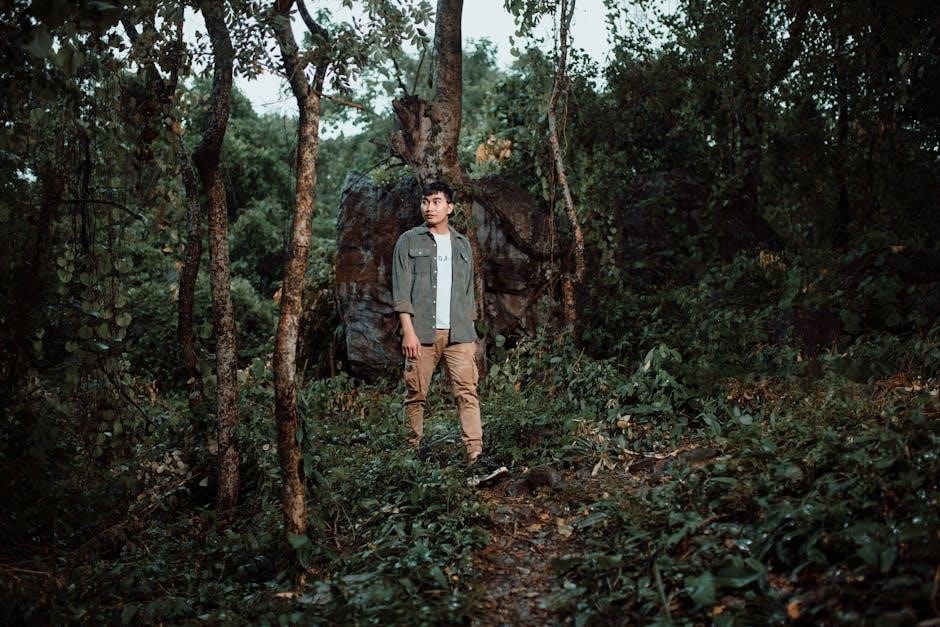
Maurice Sendak was a renowned American author, illustrator, and designer, best known for his iconic children’s book Where the Wild Things Are. Born on June 10, 1928, in Brooklyn, New York, Sendak grew up in a family of Jewish immigrants and developed a passion for drawing and storytelling early in life. His unique illustration style, blending fantasy and emotion, captivated readers worldwide. Sendak’s work often explored complex themes through simple narratives, earning him widespread acclaim. In addition to Where the Wild Things Are, he authored and illustrated several other books, including In the Night Kitchen and Outside Over There. His legacy as a pioneer in children’s literature remains unparalleled, inspiring generations of writers and artists.
The Caldecott Medal and Its Significance
The Caldecott Medal is a prestigious annual award recognizing the most distinguished American picture book for children. Awarded in 1964 to Where the Wild Things Are, it highlights Maurice Sendak’s exceptional illustration and storytelling. This honor signifies the book’s artistic and literary excellence, making it a landmark in children’s literature. The medal has elevated the book’s global recognition, ensuring its availability in various formats, including PDF, for readers worldwide. Its win underscores the enduring appeal of Max’s journey, solidifying the book’s place as a timeless classic and a testament to the power of imagination and art in storytelling.
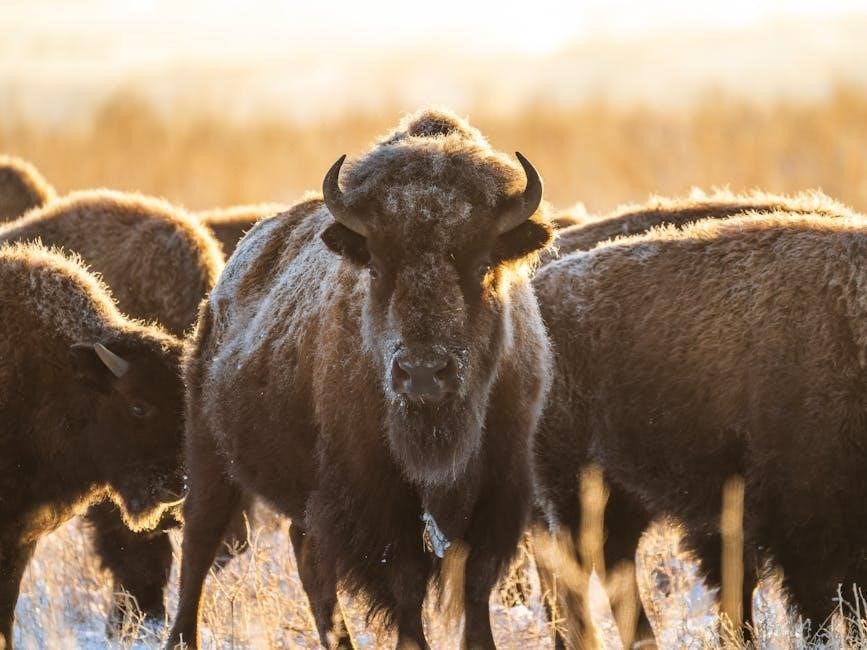
Plot Summary
Where the Wild Things Are follows Max, a young boy who travels to a fantastical land inhabited by fierce creatures. Crowned their king, Max leads the Wild Things in playful chaos before returning home, finding comfort and belonging. Available as a PDF, this timeless tale captivates readers with its vivid journey of imagination and growth.
Max’s Journey to Where the Wild Things Are
Max’s journey begins when he is sent to bed without supper, sparking his imagination and desire for adventure. He sails in his private boat across vast distances, entering a mysterious land inhabited by the Wild Things. These creatures, with their fierce roars and intimidating appearance, initially seem daunting, but Max bravely asserts his leadership. The PDF version of the book vividly captures Max’s transformative voyage, highlighting his growth from a disobedient child to a confident ruler. The story’s emotional depth and universal themes resonate deeply, making it a beloved tale for readers of all ages. The PDF format ensures accessibility, allowing readers worldwide to experience Max’s epic journey.
The Kingdom of the Wild Things
The kingdom of the Wild Things is a fantastical realm where Max discovers a world of gigantic, monstrous creatures. These beings, with their sharp claws and teeth, initially terrify Max, but he quickly earns their respect by standing up to them. The PDF version of the book details how Max becomes their king, leading them in wild rumpuses and establishing a sense of order. The kingdom symbolizes a place of freedom and untamed energy, where Max finds both challenge and camaraderie. The illustrations in the PDF vividly portray the creatures’ ferocity and Max’s leadership, making the kingdom a central element of the story’s enduring charm and appeal.
Max’s Return Home
After ruling over the Wild Things, Max begins to feel a deep longing for home. He bids farewell to his newfound friends and sets sail back to his own world. The journey is long, spanning “over a year and in and out of weeks,” but Max’s determination guides him. Upon his return, he finds his supper still hot, symbolizing the comfort and security of home. The PDF version of the book captures Max’s emotional transition from adventure to nostalgia. His return highlights the balance between exploration and the warmth of familiar surroundings, a theme resonating deeply with readers of all ages.
Themes and Symbolism
Imagination and courage shine as Max’s journey explores leadership, self-discovery, and the struggle between good and evil. His emotional journey symbolizes childhood’s universal themes.
Imagination and Adventure
Where the Wild Things Are is a celebration of imagination, as Max’s journey to a fantastical land exemplifies the boundless creativity of childhood. The story sparks curiosity, encouraging readers to explore their own imaginary worlds. Max’s adventure as king of the Wild Things symbolizes the power of imagination to transform and empower. The book’s vivid illustrations and timeless narrative inspire children to embrace adventure and explore their inner worlds. Through Max’s experiences, Sendak highlights the importance of imagination as a tool for understanding and navigating life’s challenges. This theme resonates across generations, making the book a cherished classic in children’s literature.
Courage and Leadership
Where the Wild Things Are explores themes of courage and leadership through Max’s transformative journey. Max’s bravery shines as he navigates unfamiliar territories and leads the Wild Things, showcasing his natural leadership abilities. By taming the creatures and becoming their king, Max demonstrates courage in the face of uncertainty. His leadership not only earns their respect but also highlights his ability to manage challenges. The story underscores how courage and leadership can emerge in unexpected situations, inspiring readers to embrace their own potential. Max’s adventure serves as a powerful metaphor for overcoming fears and taking charge, making it a timeless lesson for children and adults alike.

The Struggle Between Good and Evil
Where the Wild Things Are subtly explores the struggle between good and evil through Max’s interactions with the Wild Things. Max, representing innocence and order, confronts the chaotic and fearsome creatures, embodying the wild and unpredictable aspects of nature. While the Wild Things initially appear menacing, Max’s leadership and kindness transform their relationship, blurring the lines between good and evil. This dynamic suggests that even in the face of adversity, understanding and empathy can prevail; The story avoids simplistic moral dichotomies, instead offering a nuanced view of human nature and the potential for harmony between opposing forces. This theme resonates deeply, making the book a profound exploration of human emotions and behavior.

Illustrations and Art Style
Maurice Sendak’s illustrations in “Where the Wild Things Are” are iconic, featuring expressive creatures with intricate textures and dynamic compositions. His art style blends fantasy and realism, enhancing the story’s emotional depth and visual appeal. The Wild Things, with their exaggerated features, embody both ferocity and vulnerability, making them unforgettable. Sendak’s use of color and shadow creates a captivating visual narrative, drawing readers into Max’s fantastical world. The illustrations are integral to the book’s enduring charm, making it a masterpiece of visual storytelling.
Unique Illustration Techniques
Maurice Sendak’s illustrations in Where the Wild Things Are are renowned for their distinctive style and emotional depth. He used a mix of ink, watercolor, and collage techniques to create intricate textures and dynamic compositions. The Wild Things, with their exaggerated features and expressive body language, were inspired by Sendak’s own family members, adding a personal touch to their design. His use of shadows and contrast created a sense of drama, while the warm, earthy color palette evoked a sense of nostalgia. Sendak’s ability to balance detail with simplicity made the illustrations accessible to children while maintaining artistic sophistication. This unique approach has made the book a visual masterpiece, contributing to its enduring popularity and critical acclaim.
The Impact of Visual Storytelling
The visual storytelling in Where the Wild Things Are is a cornerstone of its enduring appeal. Maurice Sendak’s illustrations masterfully convey emotions and themes, drawing readers into Max’s fantastical world. The intricate details and expressive depictions of the Wild Things bring depth and life to the narrative, making the story immersive and relatable. The interplay between text and images allows children to interpret and connect with the story on a deeper level. Sendak’s art transforms the tale into a visual journey, emphasizing Max’s emotional growth and the magic of imagination; This harmonious blend of art and storytelling has made the book a timeless classic, resonating with audiences across generations and inspiring adaptations in film, theater, and beyond.
Legacy and Cultural Impact
Where the Wild Things Are is a cultural phenomenon, winning the Caldecott Medal and becoming a classic in children’s literature. Its timeless themes and iconic illustrations have inspired films, merchandise, and adaptations, cementing its place in pop culture and education. The book’s enduring popularity and influence on storytelling continue to resonate globally, making it a beloved and enduring part of childhood experiences worldwide.

Popularity and Critical Acclaim
Where the Wild Things Are has achieved unparalleled success, winning the prestigious Caldecott Medal in 1964. Its timeless story of imagination and courage has captivated readers worldwide, making it a classic in children’s literature. The book’s unique illustrations and emotional depth have earned widespread critical acclaim, solidifying its place as one of the most beloved children’s books of all time. Its popularity extends beyond print, with PDF versions widely available, ensuring its accessibility to modern readers. The story’s universal themes continue to resonate, making it a favorite among both children and adults, and a cornerstone of educational curricula globally.
Adaptations and Merchandise
Where the Wild Things Are has inspired numerous adaptations, including a 2009 feature film directed by Spike Jonze, video games, and stage productions. The book’s iconic imagery has led to a wide range of merchandise, such as toys, clothing, and home decor, further cementing its cultural impact. The story’s themes of adventure and creativity have also been adapted into educational resources and activity kits for children; Additionally, the book’s 50th-anniversary edition highlighted its enduring popularity, with fans celebrating its influence across generations. These adaptations and merchandise ensure that Max’s journey remains fresh and engaging for new audiences while honoring the original story’s timeless charm.
PDF Availability and Downloads
Where the Wild Things Are is widely available in PDF format, with versions accessible on platforms like the Internet Archive and Open Library. Various file sizes (18.1 MB to 38.2 MB) and formats (PDF, flipbooks, CBZ) cater to different preferences, ensuring easy access for readers worldwide.
Where to Find the PDF Version
The PDF version of Where the Wild Things Are can be easily found on platforms like the Internet Archive, Open Library, and other digital repositories. Users can search for the title or author, Maurice Sendak, to locate the file. Multiple versions are available, including flipbooks and CBZ formats, ensuring accessibility for different devices and preferences. The Internet Archive’s Open Source Collection offers a direct link to download the PDF, while Open Library provides a vast collection of eBooks. Additionally, some educational websites and forums share links to the PDF, making it convenient for readers to access this beloved story. Always verify the source for legal and safe downloads.
Legal Considerations for Downloading
Downloading Where the Wild Things Are in PDF requires attention to copyright laws. Ensure the source is legal, such as libraries or authorized platforms. Respect intellectual property rights to avoid legal issues.
File Sizes and Formats
The PDF versions of Where the Wild Things Are vary in file size, ranging from 18.1 MB to 38.2 MB, depending on the quality and format. Some versions are available as simple PDFs, while others are presented as flipbooks or within CBZ archives. The differences in file size often relate to the resolution and additional features, such as interactive elements or annotations. Readers can choose the format that best suits their device and reading preferences. It’s important to ensure the chosen version is compatible with your e-reader or browser for an optimal reading experience.
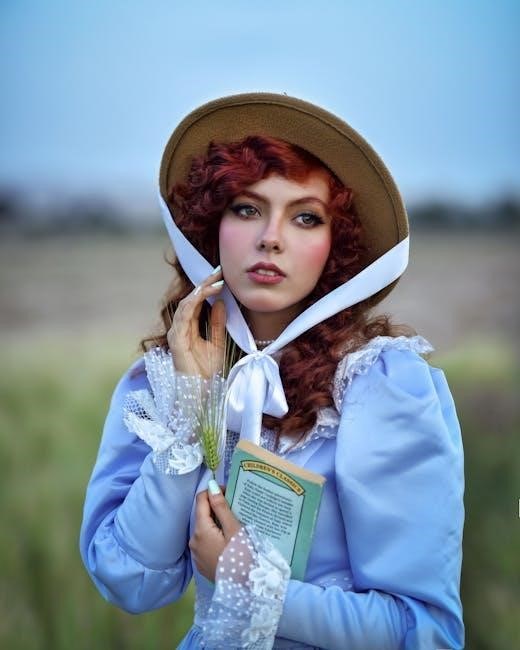
Educational and Reading Activities

Engage children with Where the Wild Things Are through reading guides, discussion questions, and creative activities. These resources enhance understanding and foster imaginative learning experiences for young readers.
Teaching the Book in Classrooms
Teachers can effectively integrate Where the Wild Things Are into classroom curricula using its PDF version for easy access. Reading the book aloud sparks imagination and encourages discussions on courage and leadership. Activities include analyzing Maurice Sendak’s illustrations, role-playing Max’s journey, and creating student illustrations of the Wild Things. Educators can also explore themes of imagination, belonging, and emotional intelligence through guided discussions. The story’s simplicity and depth make it ideal for various age groups, fostering creative thinking and empathy. Additional resources, such as reading guides and activity plans, are available online to enhance teaching strategies and student engagement with the book.
Reading Guides and Discussion Questions
Reading guides and discussion questions for Where the Wild Things Are are widely available online, including in its PDF versions. These resources help educators and parents explore themes like imagination, courage, and belonging. Questions focus on Max’s journey, the symbolism of the Wild Things, and the emotional depth of the story. Activities encourage readers to analyze the relationship between text and illustrations, fostering critical thinking. Guides also suggest creative exercises, such as drawing the Wild Things or writing alternate endings. These tools make the book a valuable asset for classroom discussions and home reading, enhancing understanding and engagement with Maurice Sendak’s timeless tale.
Activities for Children
Where the Wild Things Are inspires engaging activities for children, fostering creativity and learning. Kids can draw or paint the Wild Things, encouraging artistic expression. Crafting Max’s wolf costume or creating masks of the creatures enhances storytelling participation. Role-playing Max’s journey or acting out scenes from the book promotes imaginative play. Parents and educators can incorporate the PDF version into these activities, using illustrations as prompts. Additionally, writing or illustrating alternate endings allows children to explore their own creativity. These activities not only entertain but also deepen understanding of the story’s themes, such as bravery and friendship, making the book a versatile tool for both fun and education. Free PDF downloads often include coloring pages and guides to further enrich these experiences.
Where the Wild Things Are remains a timeless classic, its PDF availability ensuring accessibility, and its themes of imagination and courage continue to captivate readers universally.
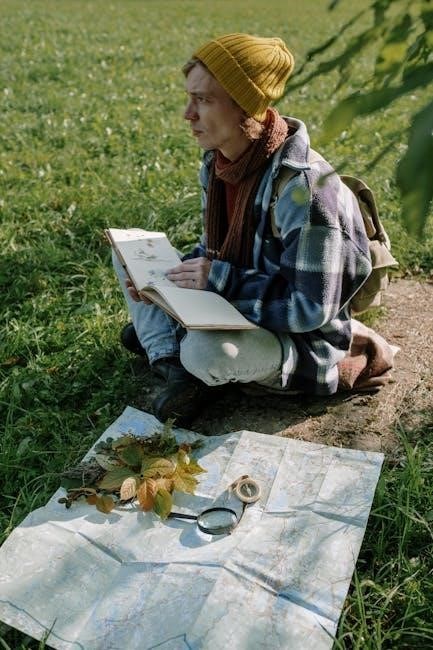
The Enduring Appeal of the Book
Where the Wild Things Are continues to captivate readers with its timeless themes of imagination, courage, and the universal human experience. The story of Max’s journey resonates with children and adults alike, offering a powerful exploration of emotional growth and self-discovery. Maurice Sendak’s iconic illustrations, combined with the book’s simple yet profound narrative, have solidified its place in literary history. The availability of the PDF version ensures that this beloved tale remains accessible to new generations, allowing readers to engage with the story in various formats. Its enduring appeal lies in its ability to evoke nostalgia while sparking fresh imagination, making it a cherished classic for readers worldwide.
Final Thoughts on “Where the Wild Things Are”
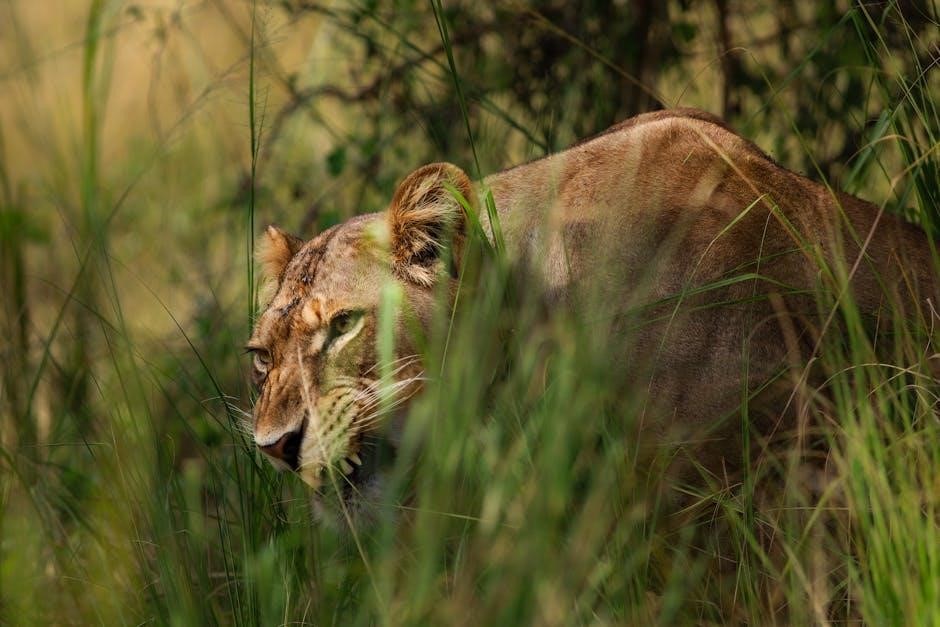
Where the Wild Things Are remains a profound and enchanting tale that transcends generations. Maurice Sendak’s masterpiece combines captivating storytelling with iconic illustrations, creating a world of wonder and emotional depth. The book’s exploration of imagination, courage, and the complexities of childhood continues to resonate deeply with readers. Its availability in PDF format ensures that this timeless story can be easily shared and enjoyed by new generations. The story of Max and the Wild Things is not just a children’s book but a universal exploration of human emotions and growth. Its enduring popularity is a testament to its ability to inspire and connect with readers of all ages, solidifying its place as a literary and cultural treasure.
